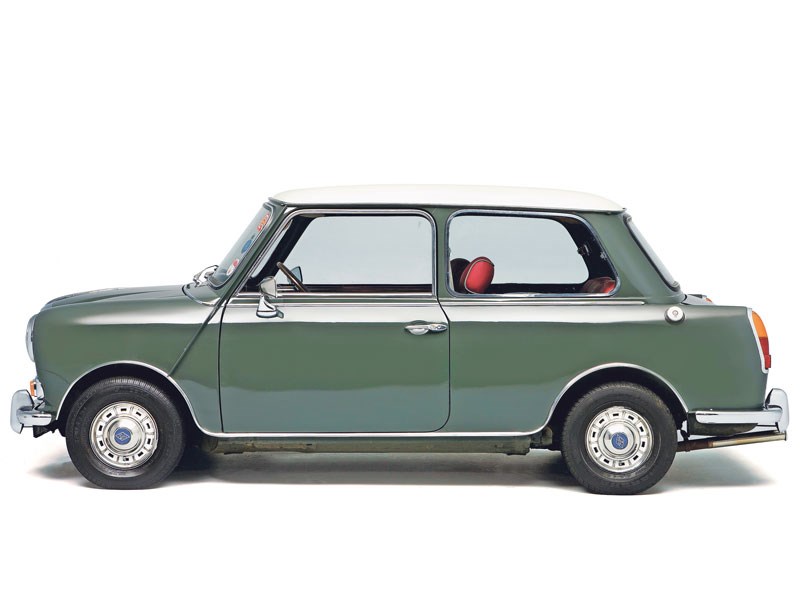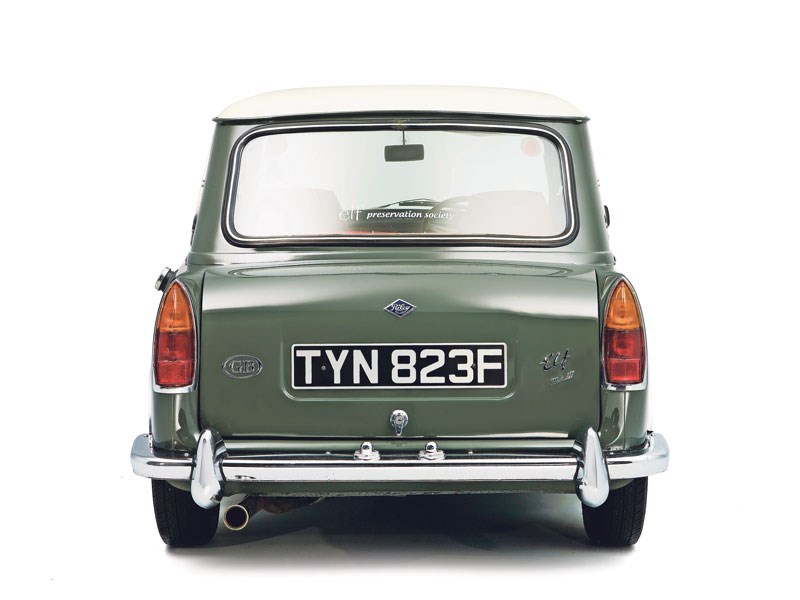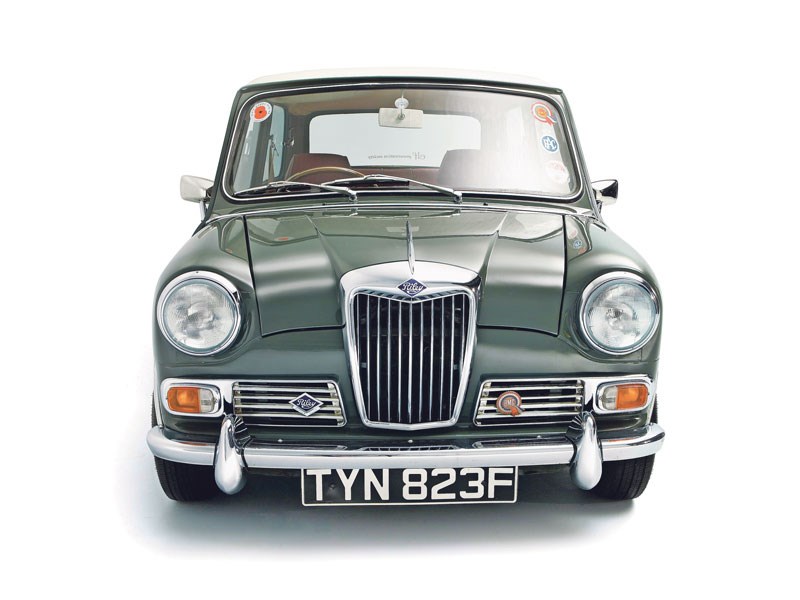These plush Mini siblings make superb classics, though the usual Mini pitfalls still apply
The usual Mini fun-factor is in full effect. That means super-direct steering, uncannily sharp direction changes and a steering wheel held at a rather unusual angle. Mk1s and 2s have the old ‘magic wand’ gearlever that seems to go up and down rather than back and forth. A remote lever was fitted from 1966 and offers greater accuracy and a shorter throw. Mk1s have less power. Mk2s have more urge and taller gearing, so are less raucous at motorway speeds. They’re not overly quick, but that’s fine, as you rarely need to slow down much for bends. The ride still has the fabled Mini bounce, even the ‘wet’ ones, but on smooth roads, there is still very little out there to touch one for cornering joy.
VITAL STATISTICS
Riley Elf MKII/III
Engine 998cc/4-cyl/OHV
Power (bhp@rpm) 38bhp@5250rpm
Torque (lb ft@rpm) 52lb ft@2700rpm
Top speed 78mph
0-60mph 24sec
Consumption 35-40mpg
WHAT TO LOOK FOR
BODYWORK & CHASSIS
Bodywork is by far the most important consideration. Much of the structure is standard Mini, which means rot can strike pretty much anywhere. Parts availability is generally good, but the front panel is unique to the Elf/Hornet and a replacement is £330. It is possible to modify one from a normal Mini – but only if you’re skilled. Look for corrosion sneaking into the seams between panels. Any rot you can see hints at much worse beneath the surface. As well as the seams, rot can strike around the headlamps.
Watch for corrosion around the scuttle and windscreen. The Elf was the first Mini to have winding windows, but later door skins fit OK. Make sure the mechanism works – handles for the Mk3 are brittle and hard to find. Check the sill and then check the footwells for dampness. If allowed, lift the carpet for a thorough check. The low height of the cars makes checking the underside difficult. You need to be wary though – restoring an Elf/Hornet’s body can easily result in thousands of pounds of expenditure due to the all-welded construction. Clamber into the rear and give the inner wheelarches a good shove, either side of the rear seat, too – another common rot spot.
ENGINE
Parts availability is such that most mechanical issues are easily overcome. The Mk1 had the 848cc unit, while the Mk2 and Mk3 had 998cc. Engines will get smoky with age and wear, but can soldier on for a good while before an overhaul is required. Rattly timing chains are annoying rather than dangerous. Radiators and the block can silt up, so check the state of the coolant and keep an eye on the temperature gauge. The gearbox is a weakness, living as it does in the sump of the engine. Watch for failing synchromesh (not fitted to first until mid-1968) and excessive noise suggesting a rebuild is required. Oil leaks are fairly standard, but be wary of anything excessive.
RUNNING GEAR
The rear wings are unique to these cars, and you can’t get new ones. Therefore, you need to check carefully for damage and any bodgery. There is an extension piece welded to the boot floor to extend it, so check carefully for rot in this area. Be aware that while the boot is larger, the hinges sink down into the load area and hamper useable space. You really need to get underneath to check the state of the rear subframe. The front tends to get protected by engine oil leaks but the rear can corrode readily. Budget on £800 if you pay a specialist to buy and fit one for you, possibly slightly more for a ‘wet’ car.
Chromework should all be in good condition, or present on a project car. Some of it is available new, but other bits will need hours of scouring autojumbles. Note that the exhaust is extended too, though bits are still plentiful.
BRAKES
All ‘Elfnets’ had all-drum brakes, but stopping power should still be pretty good. Discs can be fitted, but must be Cooper specification to allow use of the standard 10-inch wheels. Uprated drums are also available. The steering is typically Mini-direct and should be entirely free of play. From 1964, the cars were hydrolastic or ‘wet.’ Check the pipework for leaks. The ride should be slightly smoother than the ‘dry’ cars. Some may have been converted to ‘dry’ when problems have arisen. Watch for clicking CV joints on tight turns.
INTERIOR
Interiors are quite plush, and £1000 can easily be absorbed during a retrim. Seat facings are leather, though backs and sides are usually vinyl. Check the wood dashboard for cracks and delamination.
OUR VERDICT
The Elf and Hornet are easily forgotten in a sea of Minis, but they deserve recognition. They’re just as much fun to drive, but have an exclusive feel, with their cute bustles offering a bit more boot space – never a bad thing with a Mini. Inside, they lack the starkness of early Minis and are very pleasantly appointed.








